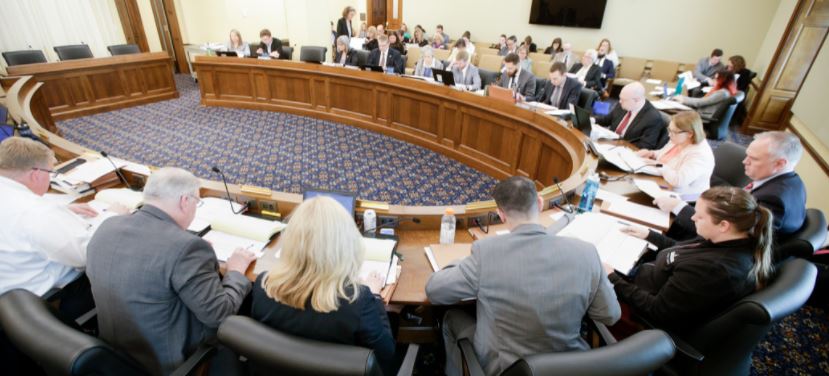Many of our clients are pharmaceutical industry professionals working to increase access for Medicaid members to drugs, devices and therapies. These clients include manufacturers, PBMs and other organization types. The article below is based on our experience working with professionals who have successfully navigated this space. Concepts have been simplified for clarity.
Reading time: 7 minutes
Intended Reader: Pharmaceutical manufacturer Market Access teams newer to the Medicaid space
Key Concepts About Medicaid Rx Coverage
Before we can gain a proper understanding of a Medicaid P&T Committee, we need to cover a few key concepts first:
- Prescription drug coverage is an optional Medicaid benefit
- Much of Medicaid drug coverage in the U.S. is set at the federal level by the Department of Health and Human Services (HHS) via the Medicaid Drug Rebate Program (MDRP)
- States can negotiate supplemental rebate agreements with manufacturers
- States can also design and implement preferred drug lists (PDLs) and formularies, so long as they don’t conflict with the MDRP
If you are familiar with these concepts, you can skip down to the “Makeup of the Medicaid P&T” committee section.
States do not have to cover prescription drugs
Many people are surprised to learn that prescription drug coverage is an optional benefit for Medicaid programs. When a state chooses to cover it (all currently do), they agree to certain regulations promulgated by HHS. These regulations include covering drugs in the nationally-managed Medicaid Drug Rebate Program (MDRP) and also excluding certain drugs selected by HHS.
Relation to the federal Medicaid Drug Rebate Program (MDRP)
While a large portion of Medicaid drug coverage is determined centrally by HHS via the Medicaid Drug Rebate Program, any state Medicaid program that has a preferred drug list (PDL) or formulary separate from MDRP must also perform a range of oversight and management functions. Usually these activities are handled by a Pharmacy and Therapeutics (P&T) Committee. There are 46 states that have PDLs at the time of this insight article.[1]
Supplemental Rebates, Preferred Drug Lists and Formularies
States can develop their own Medicaid PDLs and formularies, as long as non-preferred/ non-formulary drugs are available through a prior authorization process. (Certain classes of drugs can be excluded from coverage entirely, as discussed below). States often negotiate supplemental rebates with manufacturers of MDRP drugs in exchange for relaxed prior authorization and other criteria for members to access the drug.
What is a state Medicaid P&T Committee? What does it do?
Makeup of the Committee
Federal Medicaid law requires any state Medicaid P&T committee to include physicians and pharmacists. These are often appointed by the Governor in the state. They may also include researchers and advocates.
Typical P&T Committee Activities
While the P&T committees in the Medicaid payer space are very similar to those in the commercial space, the overall scope of authority and purposes are very different. Additionally, each state Medicaid program can have its own P&T committee, so it is important to become familiar with the procedures used by the different Medicaid programs you are working with for market access.
Common Medicaid P&T committee functions include:
- Review and recommended classes of drugs for inclusion in the PDL
- Consider efficacy, safety and cost for drugs on the PDL
- Provide written reports to show clinical evidence considered in recommendations
- Recommend limitations and protocols such as prior authorization policies and utilization restrictions
- Annual review of all drug classes on PDL
- Allow manufacturers to submit evidence related to drugs under review
Types of Restrictions Medicaid P&T Committees Can Place on Drugs and Medical Products
As long as policies are not in conflict with national MDRP coverage, a state can enact a wide range of restrictions.
They can establish prior authorization (PA) criteria- but a member PA request has to be answered within 24 hours, and has certain exceptions for emergency situations.
States can exclude drugs from a wide range of categories, using a list maintained by the HHS Secretary.
There also also some instances in which a state can actually exclude an MDRP-covered drug if it does not offer a significant clinical benefit over another drug the state has on their formulary.
Selected State Medicaid P&T Comparisons
The table below compares a few state Medicaid P&T committees in terms makeup of the committee and how often they meet.
| State | Makeup of the committee | Schedule |
| WV | 15 members, appointed by state HHS secretary, 3 year terms | At least quarterly |
| OR | 11 members, 3 year term | At least annually, usually monthly |
| OH | 10 members, appointed by Medicaid Director, 2 year terms | At least quarterly, with annual review of entire PDL |
| UT | 9 members, Appointed by Medicaid Director, 2 year terms | At least quarterly |
How You Can Better Navigate a State Medicaid P&T Committee in your Market Access Efforts
We help a range of pharmaceutical clients navigate these challenges, and are happy to discuss supporting your efforts any time.
Besides your own research into this topic, there are a few key tactics that can help you overcome some of the common challenges related to Medicaid P&T committees and market access:
- Become familiar with the rules for presenting supporting evidence– Each state has different policies about how long and in what format a manufacturer or their representative can speak at meetings. They also have different rules about the types of clinical evidence that can be submitted.
- Review the meeting minutes or a recent webinar recording of the P&T committee you are considering working with – most states now place copies of meeting minutes or webinar recordings online. Watching these videos will allow you to get a sense of how to committee operates as you form your approach.
- Identify how the state manages larger evidence review projects– Some states conduct extensive projects on effectiveness (and cost-effectiveness) of certain product classes. These reviews will often occur over multiple years and involve a team of researchers




